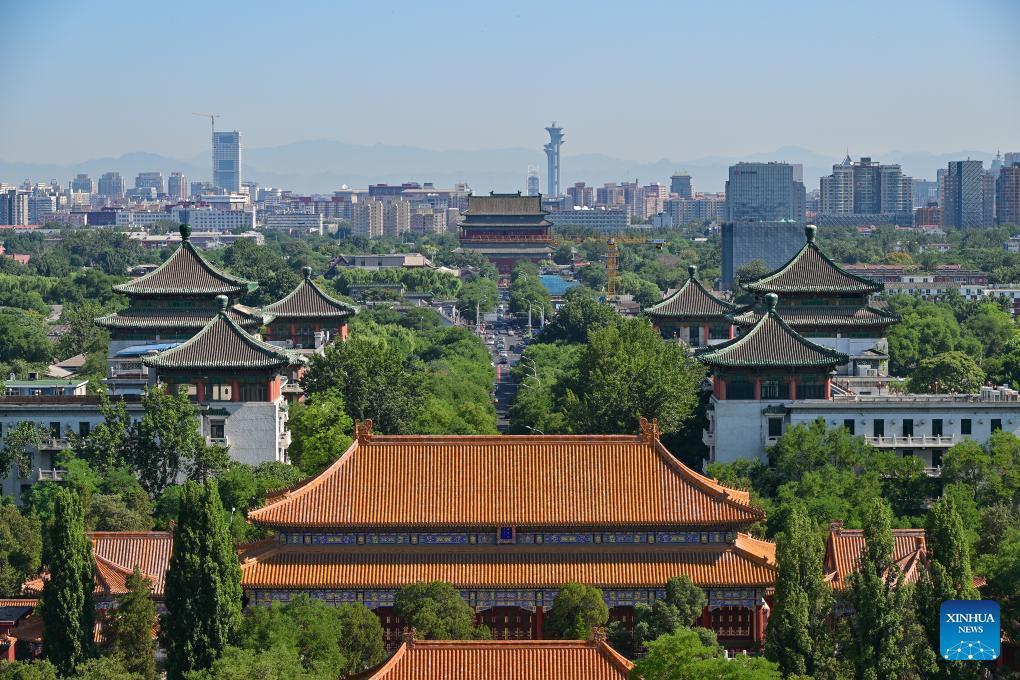
 0 Comment(s)
0 Comment(s) Print
Print E-mail Xinhua, September 3, 2024
E-mail Xinhua, September 3, 2024

This photo taken on June 21, 2023 shows the Drum Tower as seen from the Jingshan Park in Beijing, capital of China. First created in the Yuan Dynasty (1271-1368), the Beijing Central Axis, or Zhongzhouxian, stretches 7.8 kilometers between the Yongding Gate in the south of the city and the Drum Tower and Bell Tower in the north. Most of the major old-city buildings of Beijing sit along this axis. Gates, palaces, temples, squares and gardens of the old city are all linked up to the axis. As they witnessed the folk activities along the line from old days to new ones, they themselves are a joy to behold at all times. [Xinhua/Li Xin]
China's Minister of Culture and Tourism Sun Yeli has, during an interview with Xinhua, emphasized the country's efforts to build a system of Chinese cultural identity symbols leveraging its rich cultural and tourism resources.
The minister said China will introduce and promote its World Heritage Sites and other key cultural heritage sites to the public as national cultural landmarks, and distill symbols and images that represent the shared culture of the Chinese nation from key intangible cultural heritage (ICH) items.
China now has 40 World Cultural Heritage sites after the United Nations Educational, Scientific and Cultural Organization (UNESCO) announced the inscription of Beijing Central Axis: A Building Ensemble Exhibiting the Ideal Order of the Chinese Capital on its World Heritage List in July this year.
China has over 100,000 ICH representative projects at various levels, including 1,557 listed as national-level ICH projects and 43, including the traditional Chinese martial art of Taijiquan and traditional tea processing techniques, inscribed on the UNESCO Intangible Cultural Heritage List.
"We will work to improve the systems for safeguarding and passing on cultural heritage, strengthen oversight, and promote systematic protection and unified management of cultural heritage," Sun said, while also highlighting the importance of balancing preservation with innovation and development.
Regarding cultural relics protection and archaeological research, the minister said the government will ensure the effective implementation of China's ongoing fourth national survey on immovable cultural relics, and promote the project of tracing the origins of the Chinese civilization.
It is essential to establish a mechanism for protecting and utilizing heritage sites of grand scale and significant archaeological value, mainly the likes of expansive settlements, city sites, palaces, tombs and burial sites, according to Sun.
The government will also further improve policies, regulations, heritage listing systems and talent cultivation for the preservation of ICH, he said, while adding that protection methods will be diversified and aligned with the specific characteristics of each ICH item.
China will improve the building of cultural preservation zones, Sun revealed. Cultural preservation zones are designated areas established by the government to protect distinctive and valuable cultural forms found within these areas.
The minister said the government will also encourage public participation in ICH preservation, adding that continued efforts will focus on exploring ways to integrate ICH with modern life.
Go to Forum >>0 Comment(s)